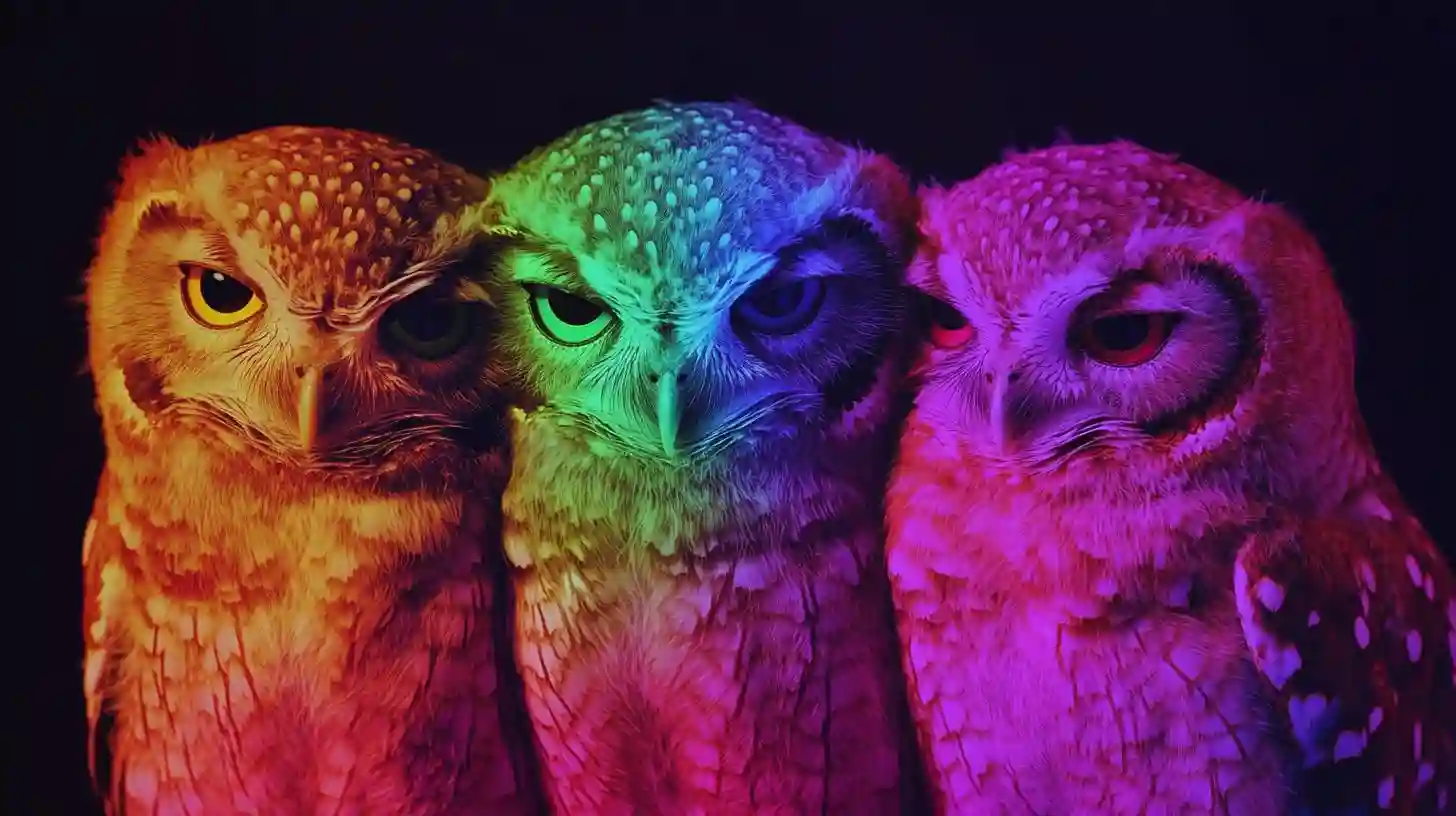
Recent research has shed light on the color vision of owls, revealing that these magnificent nocturnal predators may be color blind. Owls have long fascinated scientists and bird enthusiasts alike due to their unique adaptations for life in low-light environments, including specialized eyes that allow them to see exceptionally well in the dark. The discovery that their vision might be limited in terms of color perception alters the understanding of how these birds interact with their environment and hunt their prey.
Owls primarily rely on their acute sense of hearing and exceptional night vision to locate and capture prey. Their eyes possess a high density of rod cells, which are sensitive to low light levels. This adaptation is crucial for hunting in the darkness of night. While having a high number of rod cells enhances nighttime vision, it can come at the cost of reduced color discernment. Color vision in birds typically involves cone cells, which detect different wavelengths of light. The balance of cone and rod cells in an animal's eyes dictates its color perception and visual acuity.
Research conducted by ornithologists and vision scientists employed innovative techniques to determine the color vision capabilities of owls. Using genetic analysis and behavioral experiments, scientists examined the types of photoreceptors present in owl retinas as well as the visual behaviors of these birds. The findings indicated that owls possess fewer cone cells than many diurnal birds, which have a rich array of cones for crisp color vision. Instead, it appears that owls rely more on their rods, confirming suspicions that they may experience a limited view of the color spectrum.
The implications of this discovery extend to the hunting strategies of owls. Predation is a complex behavior influenced not only by visual capabilities but also by auditory processing and environmental interactions. Owls use a combination of hearing and sight to detect the slightest movements of their prey, which often includes small mammals and birds. By focusing on contrasts in brightness and motion rather than color, owls can effectively hunt in low-light situations.
Understanding color blindness in owls provides vital insights into the evolution of their visual systems and adaptations to nocturnal lifestyles. Evolutionary pressures may have favored the development of keen hearing and night vision over full-spectrum color vision. The primary task of owls is to capture prey efficiently, which they achieve through their acute auditory perception and ability to detect movement in the dark. The loss of color detection may not significantly impact their hunting success, as their survival strategy hinges on different sensory modalities.
Another compelling aspect of this research pertains to ecosystem dynamics. Owls play a critical role in maintaining the balance of various ecosystems, acting as both predators and prey within food webs. Their ability to effectively hunt nocturnal rodents can influence population dynamics, helping to keep these populations in check. Color discrimination may not be necessary for these predators, as their hunting style relies more on stealth, acute sensing of vibrations, and evaluating spatial orientation in low-light contexts. As a result, understanding the sensory capabilities of owls can have far-reaching implications for conservation efforts and habitat management.
Moreover, this finding enriches the broader field of avian vision research. While many species have adapted to numerous ecological niches, owls present a fascinating case study in how animals that thrive in aphotic settings prioritize different sensory systems. Exploring the diversity of visual systems across bird species can provide new knowledge about evolution, adaptations, and the ecological roles of various avian families.
Color blindness in owls might initially seem like a limitation; however, it highlights the remarkable adaptability and specialization of these creatures. Their survival in one of nature’s most challenging environments showcases the diversity of evolutionary paths that species can take depending on their ecological niches. As scientists continue to delve deeper into the sensory biology of owls, new findings are likely to emerge, shedding light on how these predators have mastered the art of nocturnal hunting despite their limited color vision. This ongoing research is a reminder of the complexities of nature and the specialized adaptations that shape the lives of the creatures we share our planet with.